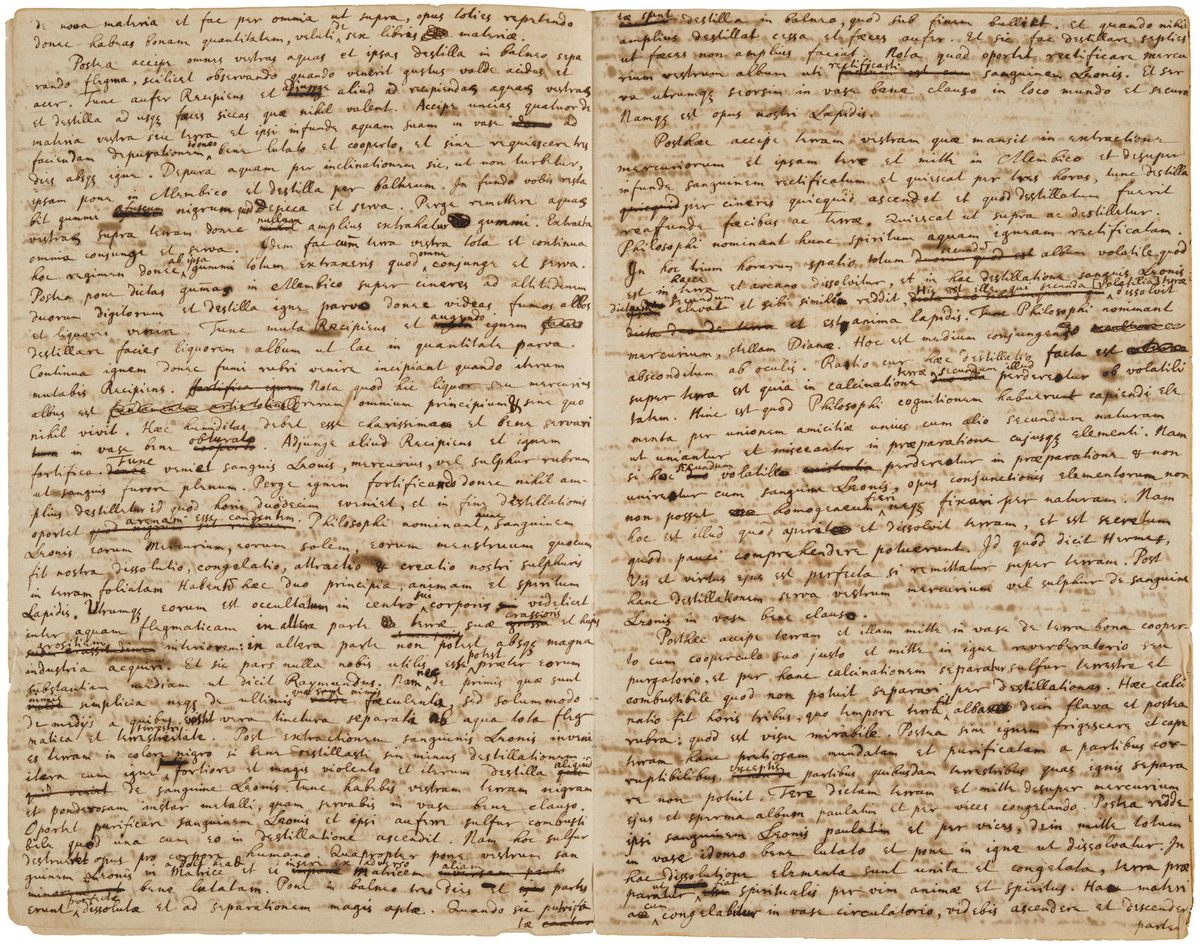Sold: Isaac Newton’s Notes on the Philosopher’s Stone
The famous physicist’s interest in alchemy was hidden until the 1930s.

In 1936, a manuscript sale changed how scholars and fans thought of Isaac Newton. The English scientist, who was born in 1642 and lived into his 80s, had long been famous for his work in physics and mathematics. But Newton’s interests ranged much wider than that, and the papers sold in 1936 offered a look at his thinking about theology and alchemy, the chemistry-adjacent investigation of matter and its properties.
Among the documents auctioned off in 1936 was a manuscript in Newton’s hand, titled Opus Galli Anonymi (Work of an Anonymous Frenchman). Over eight pages, Newton copied out the instructions, with his own edits and additions, for making the famous, elusive philosopher’s stone.
Last week, that Opus went to auction again, this time at Bonhams. In 1936, it sold for a bit more than £13—more than £800 (or $1,000) in today’s currency. In this most recent sale, the document, which Bonhams described as “the largest and most substantial scientific manuscript by Newton in private hands,” sold for $275,000.

The document details a months-long procedure of distillations and additions, heating and coolings, that end with the creation of “the Secret of Secrets,” the philosopher’s stone, which could transform lead into gold. According to Bonhams, there’s no other known copy of the text Newton was transcribing.
But Newton was not just copying out the instructions. He may have been translating the work from French; along the way, he crossed out words and lines to substitute others and added his own interpretations.
After he published his foundational works on physics, Newton spent years focusing on the study of chemistry. He believed that chemistry would help him understand the same phenomena he’d been studying in his other work, including gravity. In the 17th and 18th century, chemistry and alchemy were part of the same body of knowledge, and researching alchemical works would have been an obvious part of his work.
By the late 19th century, though, alchemy was considered a sham. A collection of Newton’s papers, handed down through his family, had ended up in hands of the 5th Earl of Portsmouth, who donated his scientific papers to Cambridge University. While sorting through them, the university professors distinguished between Newton’s chemistry papers and alchemy papers, and this one went back to the earl, until the 1936 sale.
The anonymous French recipe for the philosopher’s stone was not the only one Newton collected. In 2016, Bonhams sold a version that Newton had obtained from an American chemist, George Starkey. No scientist ever did succeed in turning lead into gold. But this alchemical work is still foundational to science as we know it today.















Follow us on Twitter to get the latest on the world's hidden wonders.
Like us on Facebook to get the latest on the world's hidden wonders.
Follow us on Twitter Like us on Facebook